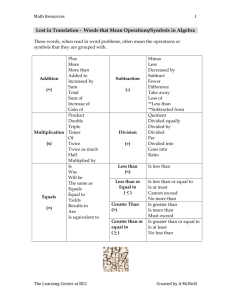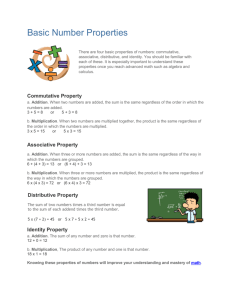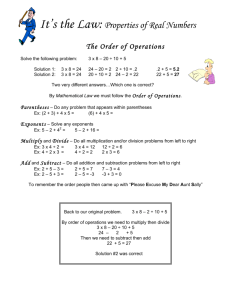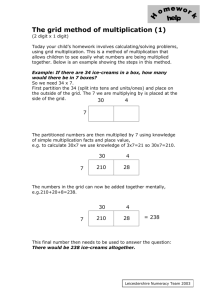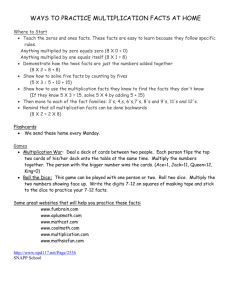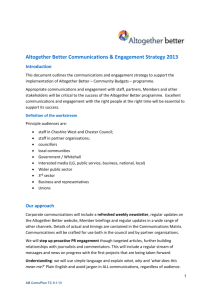repeated addition problems
advertisement
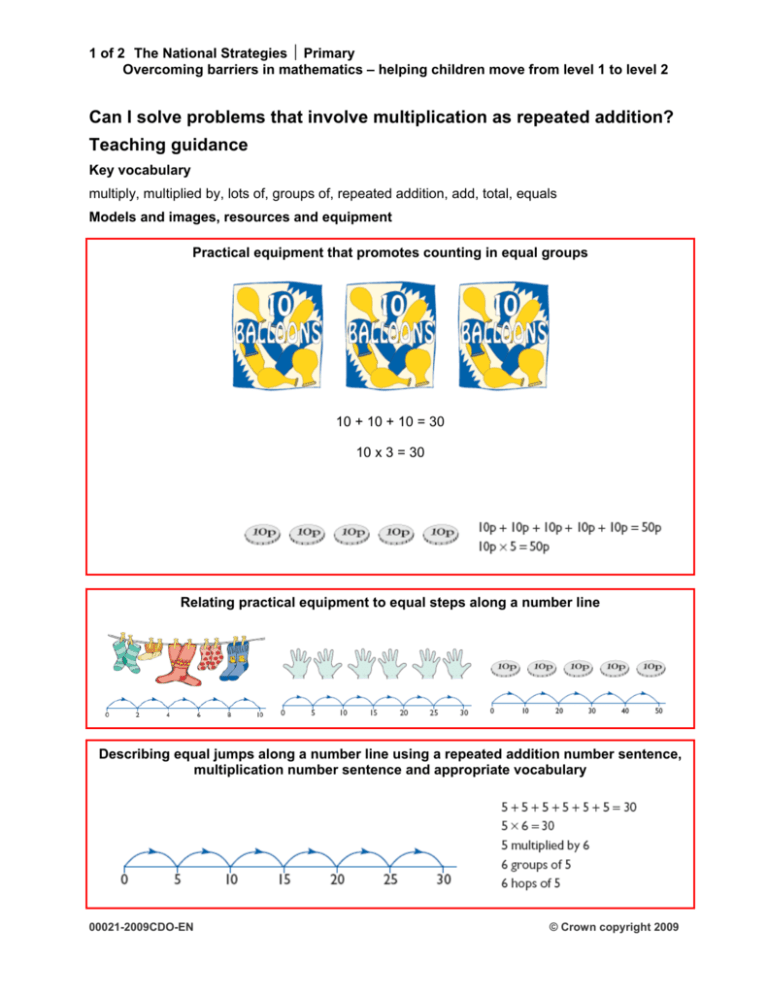
1 of 2 The National Strategies Primary Overcoming barriers in mathematics – helping children move from level 1 to level 2 Can I solve problems that involve multiplication as repeated addition? Teaching guidance Key vocabulary multiply, multiplied by, lots of, groups of, repeated addition, add, total, equals Models and images, resources and equipment Practical equipment that promotes counting in equal groups 10 + 10 + 10 = 30 10 x 3 = 30 Relating practical equipment to equal steps along a number line Describing equal jumps along a number line using a repeated addition number sentence, multiplication number sentence and appropriate vocabulary 00021-2009CDO-EN © Crown copyright 2009 2 of 2 The National Strategies Primary Overcoming barriers in mathematics – helping children move from level 1 to level 2 Teaching tips In Key Stage 1, children need to begin to gain an understanding of multiplication as repeated addition and as describing an array (see the ‘Can I describe an array and write number sentences about it?’ section of this resource). To encourage children to use repeated addition (and not find the total by counting each individual item) use practical equipment and resources where each individual item cannot be seen, e.g. 2p, 5p or 10p coins or objects that are sold in packs of a given number. Use a number line to model repeated addition, recording the equal jumps on the line. Model how to record the repeated addition number sentence this represents and then the associated multiplication number sentence. 5 5 5 6 5 5 30 5 5 30 Help children to develop the necessary vocabulary so that they can describe the number sentences that have been modelled on the number line in a variety of ways, for example, 6 jumps of 5 equals 30, 6 groups of 5 equals 30, 5 multiplied by 6 equals 30. Tell the children the words and phrases you want to hear them make use of. When using an image such as the number line it is important that the multiplication number sentence and the associated vocabulary match the image. For the image above children need to understand that 'multiplied by 6' or ' 6' means 'add the number six times'. Show children how to draw pictures to help them visualise a repeated addition problem that is set in a context. With a problem such as, ‘Sam has eight packs of stickers, each pack has ten stickers. How many stickers has he got altogether?’ spend time discussing and modelling what could be drawn (e.g. eight rectangles, each with the number 10 written on it). Provide children with problems involving repeated addition that are set in a range of different contexts, for example: o There are 10 pairs of socks in the washing pile. How many socks altogether? o I have eight 5p coins. How much money do I have altogether? o There are 7 boxes of pencils. Each box has 10 pencils. How many pencils altogether? o Sophie collects 10 shells on the first day of her holiday, 10 on the next day, 10 on the next and 10 on the next. How many shells has she collected altogether? Rather than rushing through many problems, spend time discussing a few in depth to make sure that children understand the context, can visualise and represent the problem and can select the relevant mathematics to answer the problem. 00021-2009CDO-EN © Crown copyright 2009

